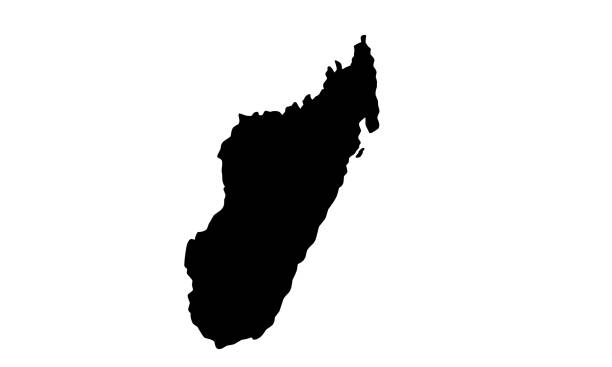2
Tour Packages
- Home
- Tour Packages
- International Tour Packages
- Island
- Madagascar
Madagascar Tour Packages
- Capital: Antananarivo
South India’s Trusted Travel Experts
Currency Name
Malagasy Ariary
Climate in Madagascar
16°C to 19°C
Languages Speaking
Malagasy, French
Madagascar's Ideal Season
July, August, December
Essential Tips for Travelling to the Madagascar
- ATMs : ATMs are not conveniently available in most locations.
- Credit Cards : Credit cards are generally not accepted in many places.
- Bank : Locating a bank in Madagascar may not always be simple.
- Drinking : In Madagascar, the legal age for drinking is 18.
- Safest : The Malagasy community is well known for being warm and welcoming.
- Prices : Flights from India are usually cheapest during December.
Madagascar's – Visitor Insights & Travel Overview

Total Annual Visitors
0.38 Million
- Male 51%
- Female 49%
Top Visitors from India
- Chennai
- Delhi
- Hyderabad
- Pune
- Jaipur
- Mumbai
- Bengaluru
- Kolkata
- Ahmedabad
- Lucknow
Essential Facts and Insights About Madagascar
Who wouldn’t dream of a vacation surrounded by stunning scenery and rare wildlife? That’s precisely what awaits you when you choose one of our amazing Madagascar tour packages.
Being the fourth-largest island in the world, Madagascar offers unmatched charm with its tranquil shores, lush rainforests, and spectacular natural reserves. Explore more about this captivating destination’s food, culture, traditions, and fascinating past.
Madagascar, the fourth-largest island in the world, is located off the southeastern coast of Africa in the Indian Ocean. Famous for its extraordinary biodiversity, the country is home to unique wildlife such as lemurs, baobab trees, and countless species of birds found nowhere else on Earth. With a mix of pristine beaches, lush rainforests, volcanic landscapes, and charming highland villages, Madagascar is a paradise for nature lovers and adventure seekers alike. Beyond its natural beauty, the island reflects a rich blend of African, Asian, and European influences, making it an intriguing cultural destination.
- Capital: Antananarivo
- Official Languages: Malagasy and French
- Currency: Malagasy Ariary (MGA)
- Population: Around 29 million
- Time Zone: East Africa Time (GMT+3)
- Best Known For: Lemurs, Baobab Avenue, Tsingy de Bemaraha, and Vanilla cultivation
These quick facts offer a snapshot of Madagascar’s charm and uniqueness, preparing travelers to better appreciate what awaits them on their journey.
When visiting Madagascar, it’s important to plan carefully. ATMs are limited, and credit cards are not widely accepted, so carrying cash is essential. The official drinking age is 18, and bottled water is recommended to avoid health issues. For transportation, domestic flights are common, as road conditions in rural areas may be challenging. French and Malagasy are widely spoken, so basic phrases can help with communication. Finally, make sure to pack light, comfortable clothing, sunscreen, and insect repellent to enjoy your trip hassle-free.
Traveling to Madagascar doesn’t have to be expensive. With the right Madagascar tour packages, you can explore its spectacular landscapes and cultural heritage at affordable rates. Budget options include guided visits to Antananarivo, day trips to national parks like Andasibe-Mantadia, and beach stays in Nosy Be. These packages often cover accommodation, transfers, and local experiences, ensuring you enjoy the island without overspending. Whether you’re a wildlife enthusiast, a cultural explorer, or a beach lover, there’s a budget-friendly itinerary designed for you.
Madagascar offers an unmatched travel experience. Imagine walking among giant baobabs, spotting playful lemurs, or relaxing on white sandy beaches. The island’s diverse geography includes rainforests, highlands, deserts, and coral reefs. Its people, known for their warmth and hospitality, preserve unique traditions, music, and handicrafts. Madagascar is not just a destination but an immersion into a land where nature and culture blend seamlessly, creating memories that last a lifetime.
- Explore extraordinary wildlife found nowhere else in the world.
- Witness the breathtaking Avenue of the Baobabs at sunset.
- Trek through Tsingy de Bemaraha, a UNESCO World Heritage Site.
- Enjoy pristine beaches in Nosy Be and Île Sainte-Marie.
- Experience rich Malagasy traditions and music.
- Taste authentic local cuisine flavored with fresh spices.
- Discover untouched rainforests and coral reefs ideal for eco-tourism.
The best time to visit Madagascar is during the dry season, from April to December. These months offer pleasant weather for exploring national parks, trekking, and enjoying the coastline. Wildlife viewing is especially rewarding from September to November, when baby lemurs can be spotted. The wet season, from January to March, is not recommended for travel, as heavy rains can affect road access and outdoor activities. For those looking for the cheapest flights, December is usually the most budget-friendly month.
Visit the Avenue of the Baobabs for iconic photography.
Explore Andasibe-Mantadia National Park to see the famous Indri lemur.
Relax on the beaches of Nosy Be and Île Sainte-Marie.
Dive or snorkel in coral-rich waters along the coast.
Hike through the dramatic landscapes of Isalo National Park.
Discover Malagasy crafts in Antananarivo’s vibrant markets.
Experience whale watching off the island’s east coast.
Shopping in Madagascar is a cultural experience in itself. Local markets overflow with colorful handmade crafts such as raffia baskets, wooden carvings, and jewelry made from semi-precious stones. Vanilla, cloves, and other spices are popular souvenirs, reflecting the island’s agricultural wealth. You’ll also find beautiful silk products and handwoven textiles created by local artisans. Bargaining is common in markets, so don’t hesitate to negotiate for a fair price while enjoying friendly exchanges with vendors.
Dos:
Carry enough local currency for daily expenses.
Respect Malagasy customs and greet locals politely.
Try local cuisine for an authentic experience.
Use eco-friendly practices while exploring nature reserves.
Don’ts:
Don’t rely solely on credit cards for payments.
Avoid drinking tap water; always opt for bottled.
Don’t take photos of locals without permission.
Avoid overpacking; travel light due to limited transport facilities.
Madagascar’s cuisine is influenced by African, Asian, and European flavors. Rice is the staple food, often served with meat, seafood, or vegetables. Popular dishes include Romazava, a beef and greens stew, and Ravitoto, made with cassava leaves and pork. Fresh seafood, especially crab, prawns, and lobster, is widely available along the coast. Street food such as mofo gasy (Malagasy bread) and tropical fruits like lychee and mango add to the local culinary delights. Spices like vanilla and cloves enhance many traditional recipes.
Madagascar’s culture is as unique as its biodiversity. Music and dance play a vital role in community celebrations, often blending African rhythms with Indonesian influences. Traditional crafts such as woodcarving, weaving, and embroidery reflect the artistry of Malagasy people. Cultural practices, including ancestral rituals and festivals like Famadihana (the turning of the bones), showcase the island’s deep respect for heritage. Visitors can also explore colonial architecture in Antananarivo and enjoy folk performances that highlight the island’s vibrant identity.
All Packages
- Madagascar, Antsirabe
- 7 Days / 6 Nights
- Madagascar, Antananarivo, Manambato
- 6 Days / 5 Nights
Visa Information
Check visa requirements before traveling, ensuring a smooth entry and compliance with destination regulations
Health and Safety Tips
Prioritize health, stay hydrated, follow safety guidelines, and maintain personal hygiene for a secure journey.
Currency and Tipping
Familiarize with local currency, consider customary tipping practices for respectful and seamless travel experiences.
Let’s Stay in Touch
- +91 99404 63566
- Info@tripbygenie.com
Book Your Dream Vacation Today!

